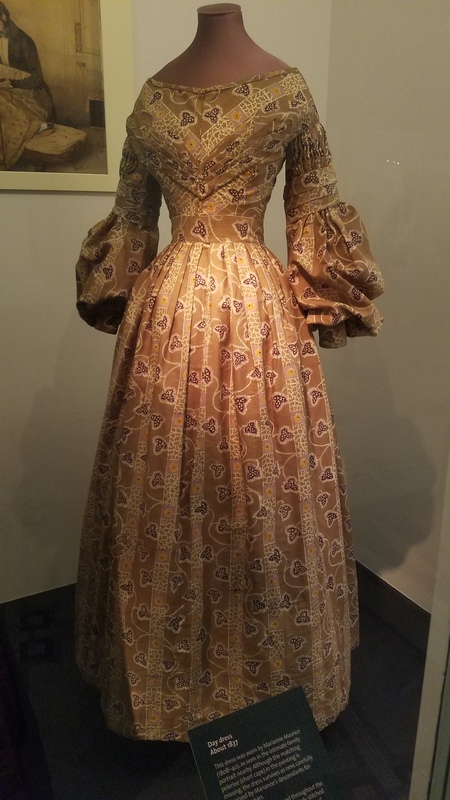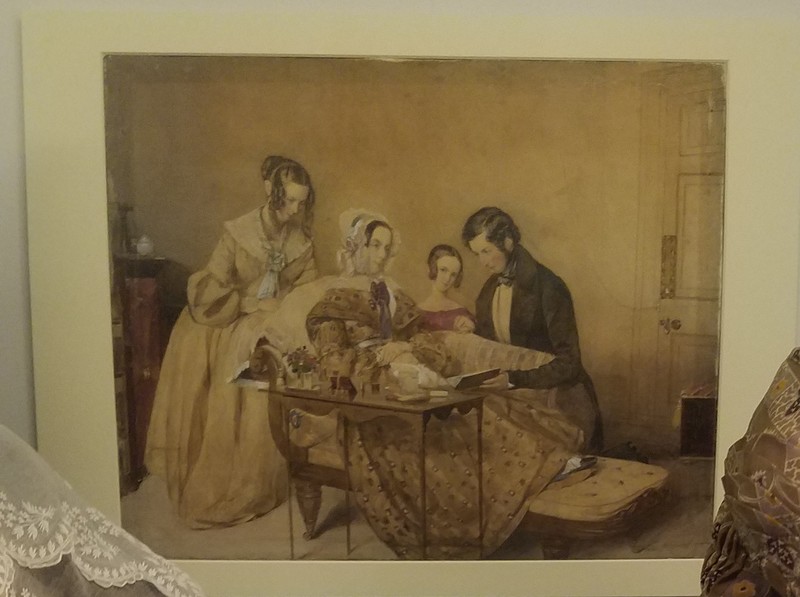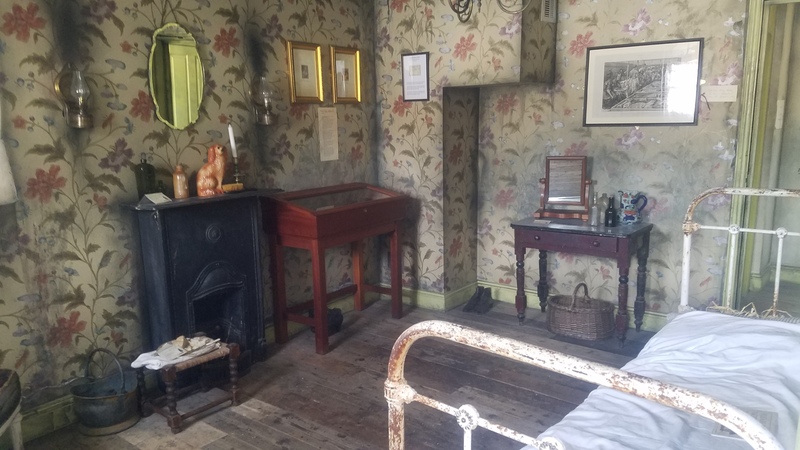Fashion and Femininity: Clothing and Decoration from the Female Perspective
Across the entire span of time that humanity has been living on this earth, the way we dress and live has changed drastically. Both men and women have experienced these changes, no one was spared the changes time brings. What has changed is how fashion is shown to the world and preserved through the ages. From cave drawings found in France that predate recorded history to the sculptures of various gods and goddesses found at the Parthenon in Athens to old hand-me-downs from great grandparents, fashion and the way we as a people perceive it has absolutely changed. Merriam-Webster defines fashion as “the prevailing style (as in dress) during a particular time; a prevailing custom, usage, or style.” With this definition, it is safe to categorize both clothing and decoration of a room in this exhibit of fashion and femininity. In the course of this exhibit, you will see three various depictions of fashion in three completely different formats: a sculpture, a well-preserved dress, and a decorated room.
To many, a sculpture may not seem to be the most fitting way to show the fashion of the time, when in fact, it is perhaps the most accurate way to tell the style of the time during which it was sculpted. East Pediment G is an amazing likeness of the female fashion at the time. Her chiton moves with her as she rushes from the center, letting the audience know that the fabric was a relatively light material with more give than wool. The Grecians were not – and still aren’t – known for their cold climates so the material the sculpture is based off of is a lightweight material. Throughout history, women are shown dressed in complete modesty, covered from head to toe, this goddess is not covered as well as history has conditioned us to believe. Her chiton robe has thick straps on her shoulders, certainly not covering the arms. There are remnants of a shawl left in what is left of her right arm, whether it was used for warmth or to compliment the chiton is unknown and seeing as there is no evidence suggesting that it wrapped around her, the figure could have simply been holding a shawl in the event she got cold.
In almost direct opposition to the free-flowing Grecian fashion depicted by the sculpture, the Day dress is more frigid and conservative of a gown. The dress was worn by Marianne Maurice and is depicted in the painting, Louisa Bullock and Marianne, Adelaide and Dr David Pierce Maurice in Lloran House, High Street, Marlborough, Wiltshire. This dress has the duller colors seen in dresses made before the 1850s and 1860s when synthetic dyes were used to create intense colors in clothing. The lower neckline would have accommodated a short neck cape called a pelerine to provide the utmost coverage and preserve the modesty of a lady. The long, elaborate sleeves are further proof that the Victorian era was a time for feminine modesty with no true care as to whether the dress was suitable for the weather. Although it was rather smart of them to create the dress using wool and fleece to make it more suitable for the colder weather and unpredictable rainstorms that often take over all of England The style is very different from the Grecian chiton, and the immediate reaction is to assume that fashion becomes less conservative over time, but this is not the case between these two dresses.
The room is perhaps the most simple out of all the fashions gathered here in this exhibit. This room is an example of a woman’s bedroom from 1888 and it is of a lower class than the dress would have been. The room is sparsely furnished, and what furnishings are there are not of the newest or highest quality. The bedframe looks as if it could give you tetanus and the mattress is stuffed with straw, which is not the most comfortable to sleep. If we think about the two dresses, neither one would be seen within the walls of this room. Both were fitting for women of middle and upper classes, while the owner of the bedroom would probably have no knowledge of who the Greek deities dressed or who they were and could not have afforded the dress from 1837 even after a good night. The owner of the bedroom would have likely been addicted to gin and would have had to sell her body in order to make rent payments. This replica bedroom is found in the Jack the Ripper Museum in Whitechapel, London, near where the actual Jack the Ripper murders took place. The museum was originally supposed to be a museum of women’s history and there was great controversy when it turned out to be a Jack the Ripper museum instead. Many people were outraged that instead of celebrating the lives of women, the owner decided to commemorate the most notorious female killer in British history.
Throughout the exhibit, fashion from around 500 BCE until 1888 is seen and displayed. They are all different, depicting different classes and times, but they were all utilized by women. It is safe to say that in all of the times represented, women did not have it supremely easy. In fact, the goddesses in Greek mythology held a lot of say so in the decision making of the world, whereas the women in middle to upper class Victorian England were held to a certain standard and had to do everything “by the book” so to speak, and the lower class women during the Victorian era were more free in some ways, but were held by the constraints of society. Both societies were run by men and thus the laws were dominated by the social constructs men had implemented. If you look at how femininity has changed over the centuries and how different societies displayed femininity, you see that more of the female figure became covered because more of the female body had become sexualized and the idea was to not encourage that behavior. In comparison to the fashion of today, both in decoration and in clothing, women are embracing their bodies in a way that hasn’t been done before and it is showing in their homes as well, and this is because of the ever evolving fashion of our ancestors.
- Delaney Johnston




